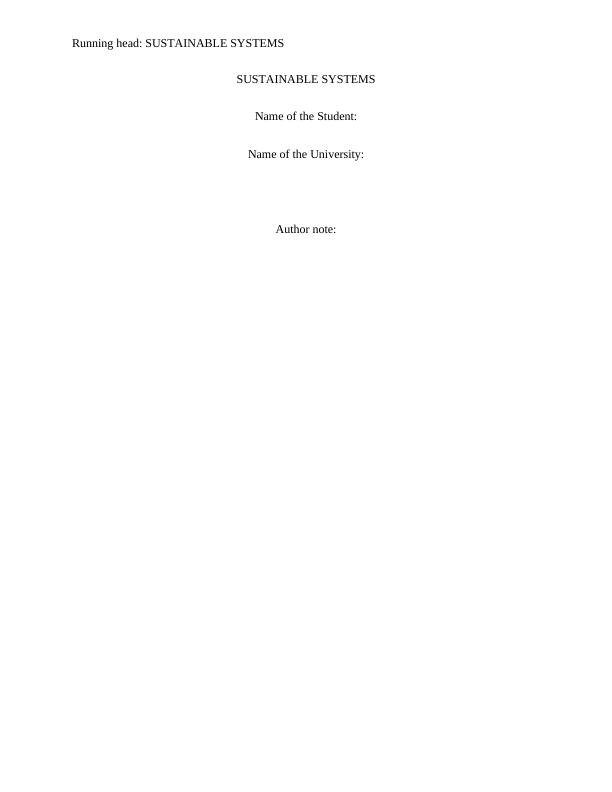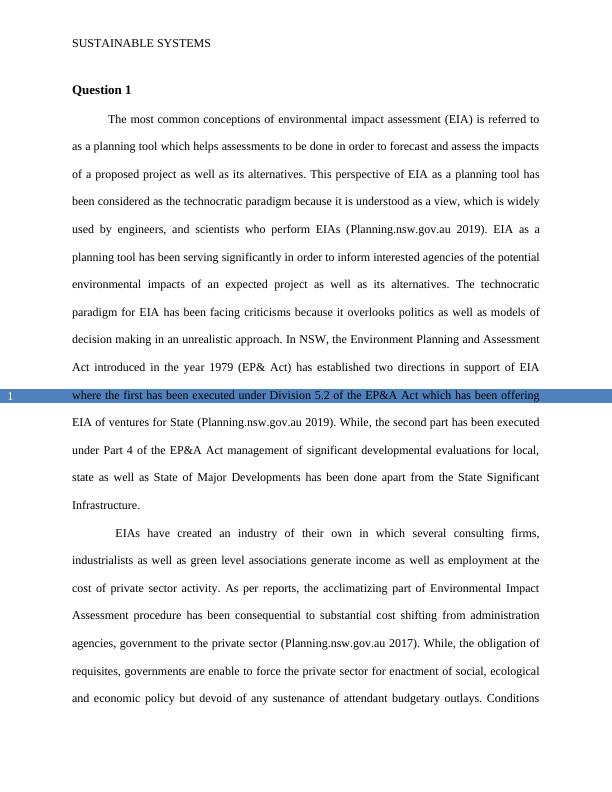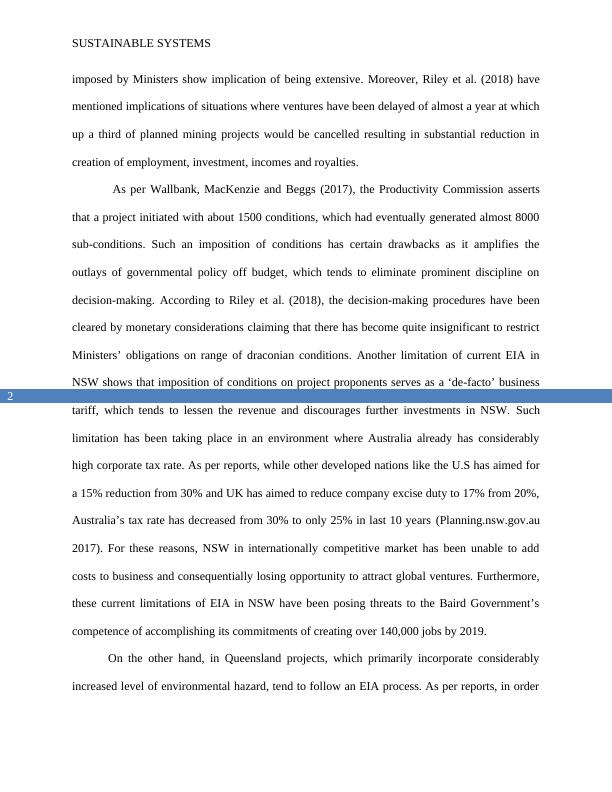Environmental Impact Assessment in NSW and Water Conservation in Australia
Compare the drawbacks of EIA in NSW and QLD and design a strategy to promote water saving at the household level.
9 Pages2392 Words413 Views
Added on 2022-11-22
About This Document
This article discusses the limitations of Environmental Impact Assessment in NSW and the importance of water conservation in Australia. It also highlights the economic benefits of water conservation and the need for effective policies and education campaigns.
Environmental Impact Assessment in NSW and Water Conservation in Australia
Compare the drawbacks of EIA in NSW and QLD and design a strategy to promote water saving at the household level.
Added on 2022-11-22
ShareRelated Documents
End of preview
Want to access all the pages? Upload your documents or become a member.
Main drawbacks towards Environmental Impact Assessments
|8
|1552
|483
ESD: Overarching Objective of EP & A Act?
|12
|4009
|424
Environmental Impact Assessment Report
|12
|2821
|96
Sustainable System
|9
|2152
|93
Environmental Planning and Assessment Act: Provisions and Consent
|22
|3770
|66
Planning and Environmental Regulation Assignment PDF
|13
|3757
|22



